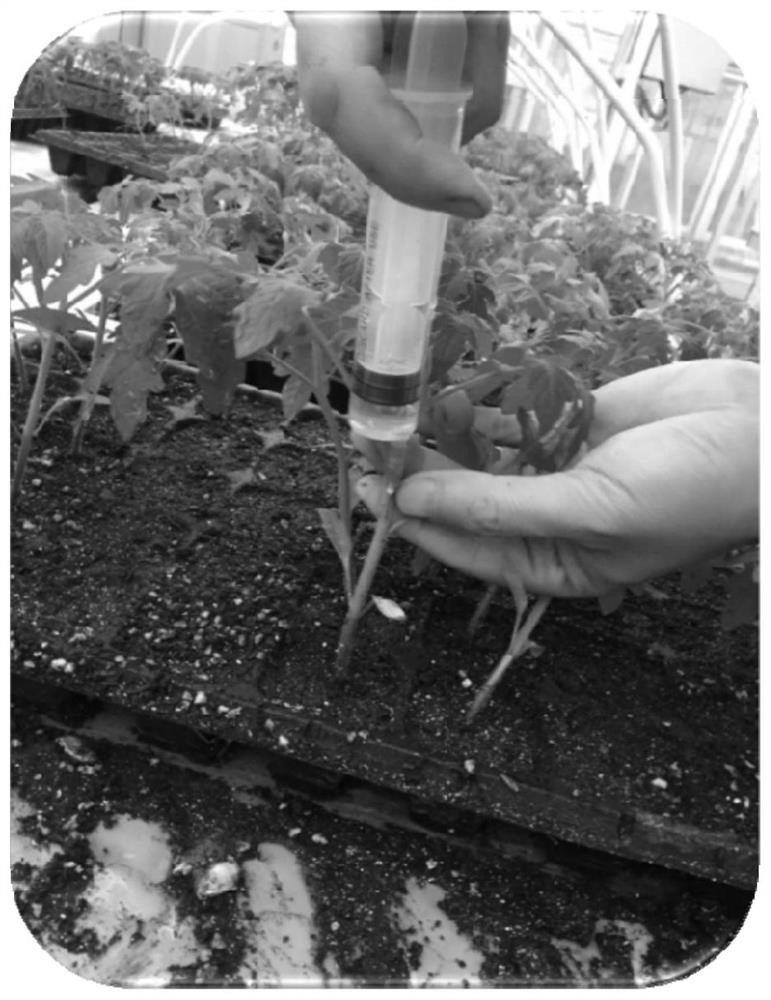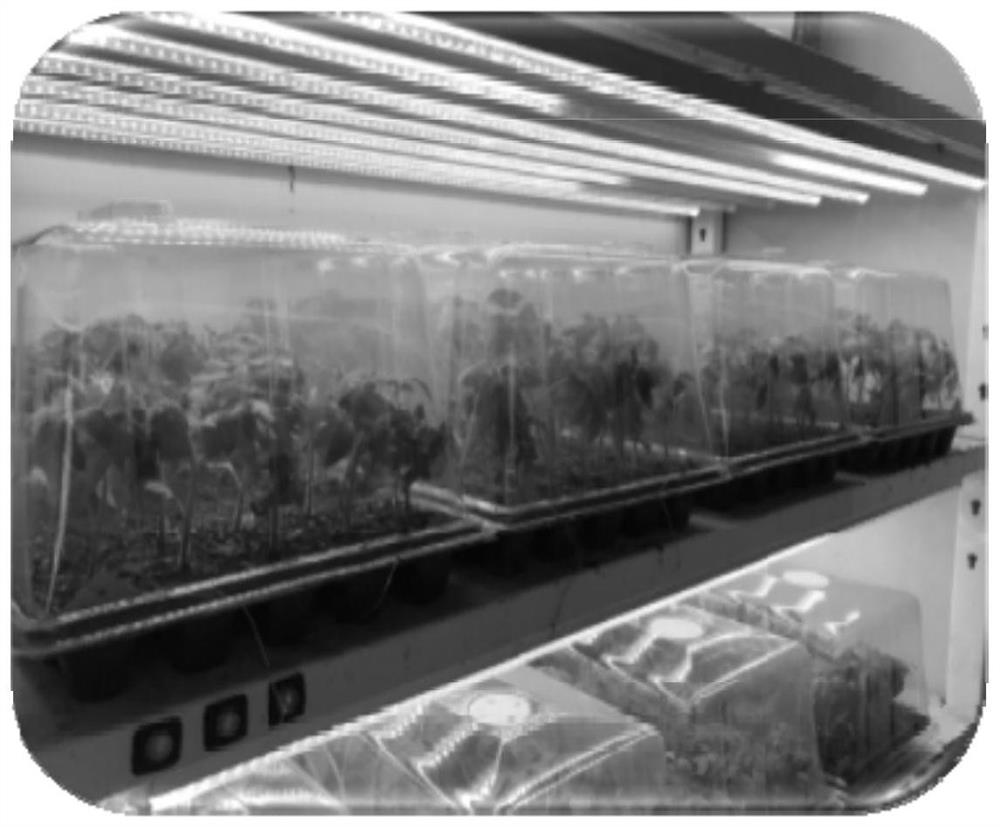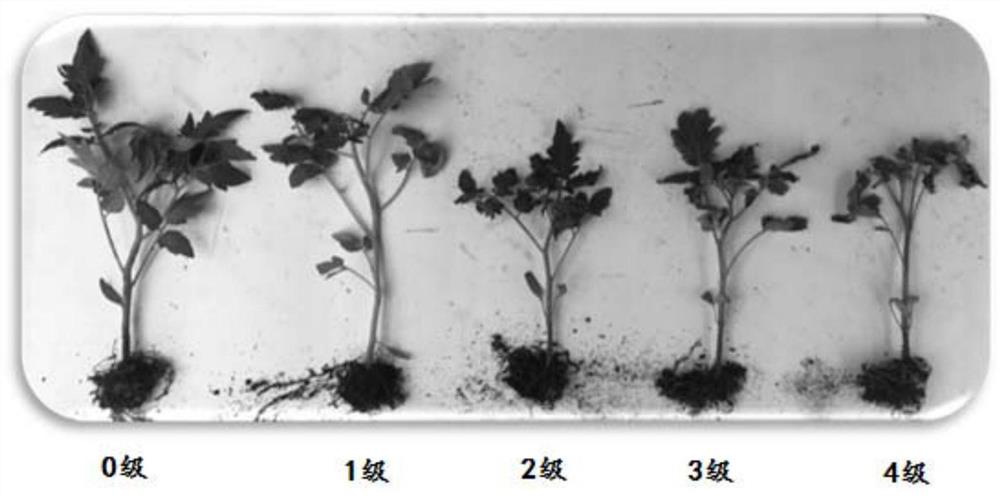Method for rapidly identifying tomato bacterial wilt seedling stage resistance through injection inoculation method
A technology for tomato bacterial wilt disease and injection inoculation is applied in the field of rapid identification of tomato bacterial wilt seedling resistance by injection inoculation method, which can solve the problems of long identification period, low efficiency, time-consuming and labor-intensive, and achieve stable and reliable identification results. , the environmental conditions are controllable, and the method is simple and fast.
- Summary
- Abstract
- Description
- Claims
- Application Information
AI Technical Summary
Problems solved by technology
Method used
Image
Examples
Embodiment 1
[0103] The method for quickly identifying the seedling stage resistance of tomato bitterness disease by injection inoculation method specifically comprises the following steps: 1. Prepare tomato material seedlings to be inoculated
[0104] Select 100 seeds of each of the above three different tomato materials, soak the seeds in warm soup at 55°C for 30 minutes, continue to soak the seeds at 20-25°C for 4-6 hours, and then accelerate germination at 28-30°C for 24-48 hours. After the seeds germinate and turn white, Sow on sterilized seedling substrate. The main components of the seedling raising substrate are peat, perlite and vermiculite, and the mass proportion is 6:2:2.
[0105] When the seedlings grow to 2 true leaves, select seedlings with healthy and consistent growth (that is, similar plant heights and the same number of leaves), and transplant the seedlings into 50-hole seedling trays, transplant 2 trays per tomato material, and transplant 30 10 plants per plate constit...
Embodiment 2-4
[0126] The difference between Examples 2-4 and Example 1 is only the concentration of the inoculum solution, as shown in Table 2, and the others are consistent with Example 1 (the control group is consistent with Example 1).
[0127] Table 2
[0128]
[0129] The resistance identification results of the three tomato materials in each embodiment are shown in Table 3 below.
[0130] table 3
[0131]
Embodiment 5
[0133] On the basis of embodiment 1, the following steps are further added:
[0134] Tomato seedlings whose resistance was determined to be resistant (R) or moderately resistant (MR) for the first time continued to be inoculated and injected for the second time. The R. solanacearum inoculum solution used was 1.2 times the concentration used in the first injection, that is, 1.2×10 7 CFU / ml (OD 600 = 0.2), use the national standard No. 6 needle syringe to draw some bacterial liquid, aim the needle at the middle of the first stem of the seedling, pierce the stem along the direction of the oblique downward direction of the stem, and then return the needle to the inside of the stem near the insertion point, Gently inject the bacterial liquid until the bacterial liquid overflows from the stem.
[0135] Then refer to the steps of observation and identification of material disease resistance in Example 1 to repeat the operation to determine the resistance to bacterial wilt.
[0136]...
PUM
 Login to View More
Login to View More Abstract
Description
Claims
Application Information
 Login to View More
Login to View More - R&D
- Intellectual Property
- Life Sciences
- Materials
- Tech Scout
- Unparalleled Data Quality
- Higher Quality Content
- 60% Fewer Hallucinations
Browse by: Latest US Patents, China's latest patents, Technical Efficacy Thesaurus, Application Domain, Technology Topic, Popular Technical Reports.
© 2025 PatSnap. All rights reserved.Legal|Privacy policy|Modern Slavery Act Transparency Statement|Sitemap|About US| Contact US: help@patsnap.com



